Common Knee Injuries in Athletes: Recovery and Prevention
By Christina Mogenlnicki Swan, Doctor of Physical Therapy at PTSMC Newington
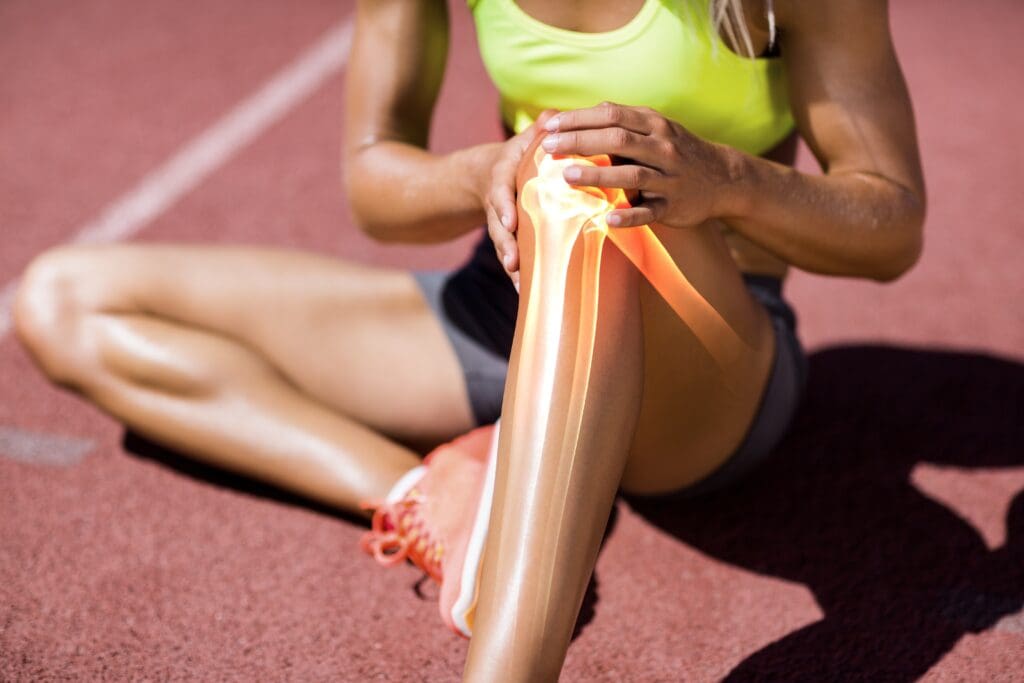
Knee injuries are incredibly common across youth and professional sports due to the sudden twists, stops, and turns athletes complete.
The most common injuries include Anterior Cruciate Ligament (ACL) tears, patellofemoral pain syndrome (PFPS), and meniscus tears. Knee injury treatment and rehabilitation timelines will vary based on the severity of the injury as well as the athlete.
Though the injury may cause an athlete to sit out a season, with the right rehabilitation team and training, the athlete will be able to return to their desired sport.
Christina Mogelnicki Swan, Doctor of Physical Therapy and Director of PTSMC Newington, breaks down three common knee injuries in sports, including what to expect from rehab and how to decrease your injury risk.
Anterior Cruciate Ligament (ACL) Injuries
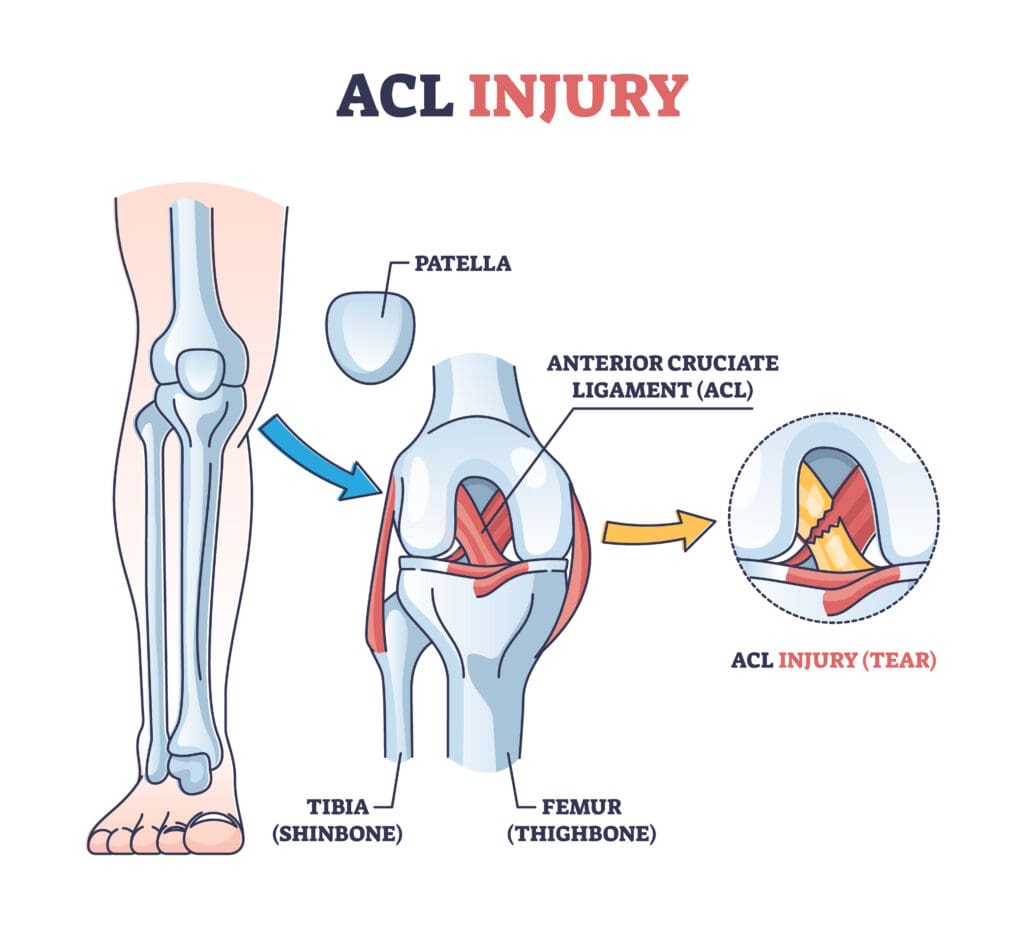
The anterior cruciate ligament (ACL) is a strong band of tissue that connects the thighbone to the shinbone. It crosses the knee diagonally and helps stabilize the joint. ACL injuries are typically caused by a rotational force of the knee in a non-contact situation, though can also occur with contact.
Common movements that can cause ACL tear:
- Making a sharp turn while running
- Landing from a jump and then going to change directions
- Trying to make a sharp turn while slowing down from a sprint
- Stopping suddenly
In all the situations above, none are caused by contact with another player. However, a collision with another player can also cause injury.
An ACL injury is a tear or sprain to the ligament. ACL tear symptoms include:
- Loud pop or popping sensation in the knee
- Severe pain
- Unable to bear weight
- Rapid swelling
- Loss of range of motion
If an ACL tear is sustained, ACL repair surgery is typically required to allow for the athlete to return to sports requiring multidirectional movements. ACL tear recovery time from surgery to return to sport is typically 9 to 12 months. Outlined below is a general return to sport timeline and month to month goals that physical therapists will guide you through.
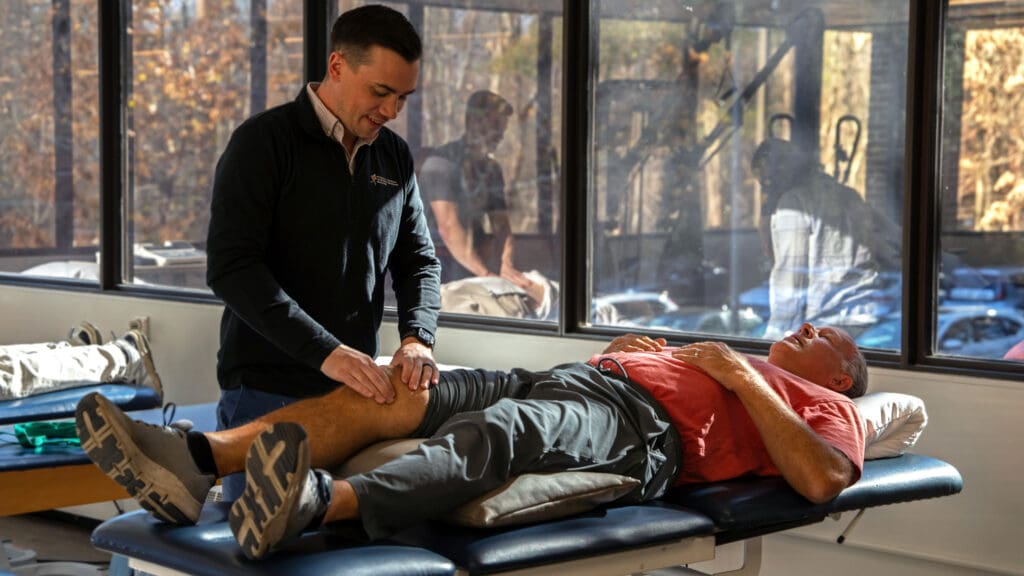
ACL Tear Treatment:
- Month 1:
- Walk without an assistive device and reduce swelling of the knee
- Regain full knee flexion and extension range of motion
- Regain quad strength to be able to complete straight leg raises
- Month 2:
- Incorporate functional movements such as squatting and hip hinging
- Address single leg balance and strength
- Month 3:
- Develop strength with functional movements
- Achieve 90% of isometric quad and hamstring strength compared to the non-operative limb
- Start to include walking speed and introductory plyometrics
- Month 4:
- Progress strength
- Linear running and light jumping tasks
- Month 5:
- Progress strength
- Running volume
- Introduce light change of direction tasks
- Month 6-9
- Progress running
- Progress plyometrics
- Start to incorporate sport specific movements
- Address psychological barriers to return to sport
Patellofemoral Pain Syndrome (PFPS)
Patellofemoral Pain Syndrome (PFPS) can be described as general discomfort and pain in the front part of the knee usually with running, stairs, and jumping activities. It is also called “runner’s knee.”
PFPS generally occurs with overuse from high levels of competition and the body not being fit enough to keep up. Usually this can be seen at the start of a season after a long break from sport. The onset of knee pain will occur if the athlete has not properly prepared for the season and starts to compete with high intensity and volume too quickly. This can also be seen during a season if the athlete is participating in high level competition with little recovery time in between games and practices. General healing time is three months of conservative management.
Signs and Symptoms of PFPS
- Front of the knee pain and stiffness that makes it difficult to climb stairs and perform other daily activities
- Front of the knee pain following an to an increase in activity volume and intensity
- Front of the knee pain following sitting with your knees bent for extended periods of time
Recovery from PFPS
The first step to recovery is to consult a physical therapist to help address and alter the following training factors to be able to best decrease pain and allow the athlete to play at their desired competitive level.
- Frequency of activity: How many days are you performing the activity?
- Intensity of activity: How much effort are you putting in at games and practices?
- Volume of activity: How many minutes, for games and practices are you participating in?
- Type of activity: the therapist will recommend supplementing current activity with other types of training, such as lower impact activity and weightlifting to stay active without aggravating the painful area.
- Assessing and addressing range of motion and strength
The physical therapist will then progress the athlete to the desired level of activity.
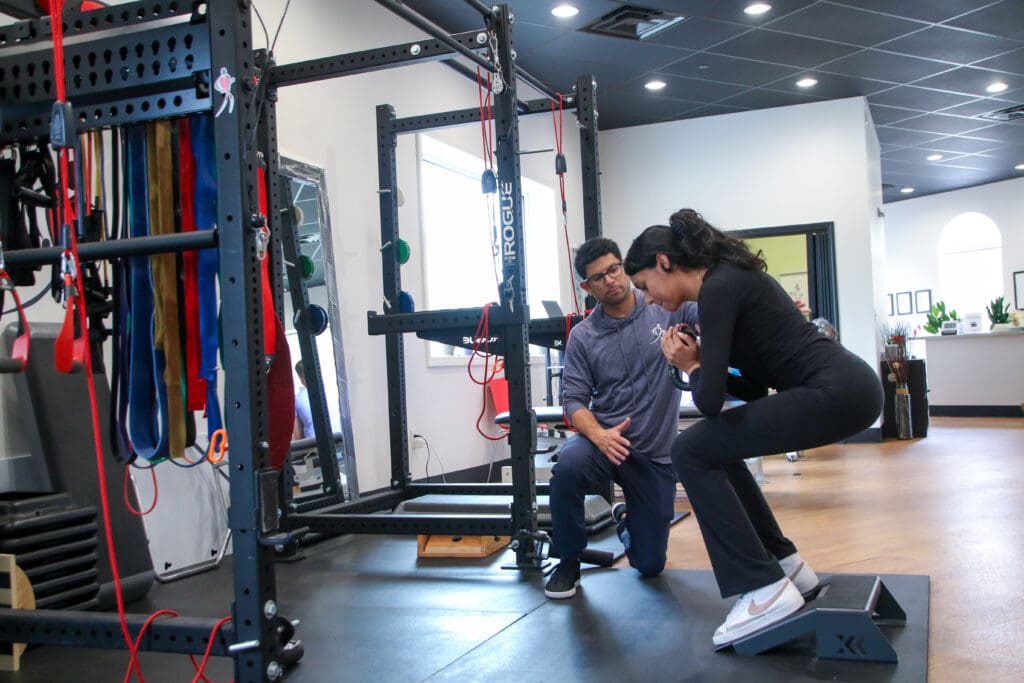
Meniscus Injury
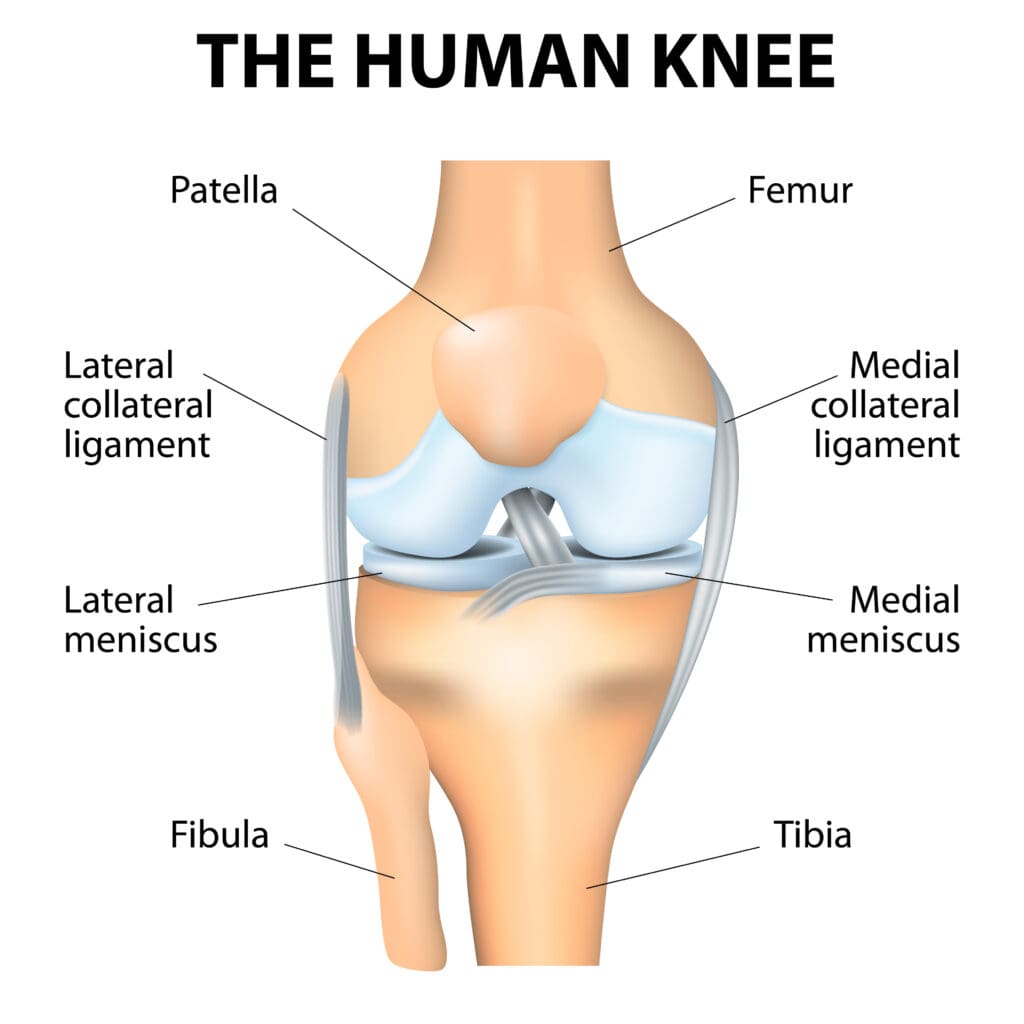
The meniscus is a pad of cartilage that acts as a cushion and shock absorber in between the tibia (shin bone) and femur (thigh bone) along the medial and lateral aspects of the knee. Meniscus tears generally occur with rotational movement to the knee as well as deep knee bending with rapid force.
Meniscus Tear Signs & Symptoms:
- Pain and complaints of the knee clicking, locking, or giving out with weight bearing movements
- Swelling
- Inability to fully extend or bend knee joint
Meniscus injuries have various levels of severity and are different for everyone. Some can be handled conservatively, and some require meniscus surgery to be repaired. Recovery time for a torn meniscus is generally 6-8 months to be able to return to sport and dependent on conservative or surgical intervention.
Decreasing Risk of Knee Injury for Athletes
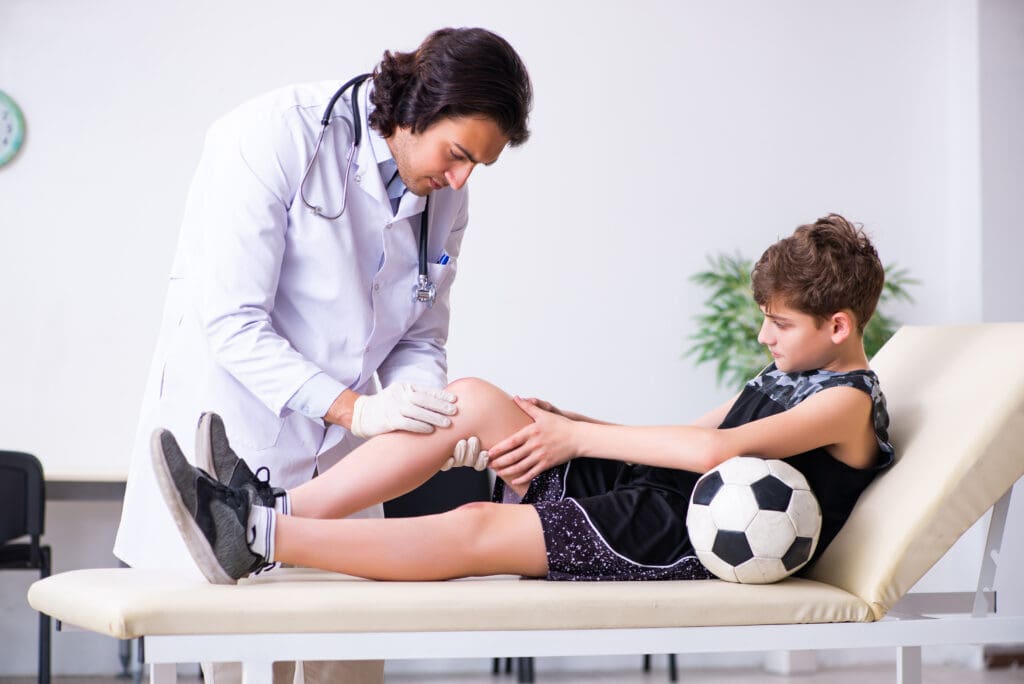
While there is no special formula to completely prevent knee injuries from occurring, there are ways to decrease risk of injury. Incorporating proper training during the off season and in-season months is the key to preventing injuries.
Off season and preseason months should generally focus on building strength, improving cardiovascular endurance, and starting to incorporate sport-specific movements.
While in-season, the main focus is to participate in competition and maintain the fitness achieved in prior months. This is not the time to try and build strength and can lead to overtraining and injury.
Lastly, during the postseason is the time for the body to recover. Continue with light exercise and incorporate a recreational sport outside of your main competitive sport. Cross training is an excellent way to maintain fitness throughout the year.
Basic exercises to decrease knee injury risk:
-
- Straight Leg Raise: Lay on your back with one knee bent. Raise the other leg to the height of the bent knee and keep the leg straight throughout the motion. Return the leg to the starting position and complete for 3×10. Add an ankle weight for an additional challenge.
- Pause Squats with Resistance Band: Place a resistance band around both knees. Squat down to 90 degrees of knee flexion and hold for 3 seconds. Rise and repeat for 3×10. Make sure to maintain the knees in line with the third toe and drive the knees out against the band not allowing them to come together. Alter the resistance of the band and the depth of the squat for increased difficulty.
- Single Leg Stance with Reaching to Target: Place three 1ft tall objects in a triangle pattern in front of you. Standing along the base of the triangle stand on one foot with a slight bend in the knee. Bend at your hips and reach towards a target. Rise and repeat until all three targets are touched. Complete for 3×10. For an additional challenge, do not put the other leg on the ground and count how many times you can touch the targets without losing your balance.
- Lateral Walking with a Band: Place a resistance band around both knees. Slightly bend your knees to a quarter of a squat. Start taking steps laterally to one side while keeping tension on the band and not allowing the feet or knees to come together and touch. Complete for 3×10 yards in both directions. Alter the resistance of the band for added difficulty.
There’s no guarantee of preventing knee injuries. If you’re looking to prevent injuries or treat current knee pain, reach out to one of our clinics. There are many different knee injury types, and one of our licensed physical therapists will be able to assess any current injuries and help prevent future injuries.
